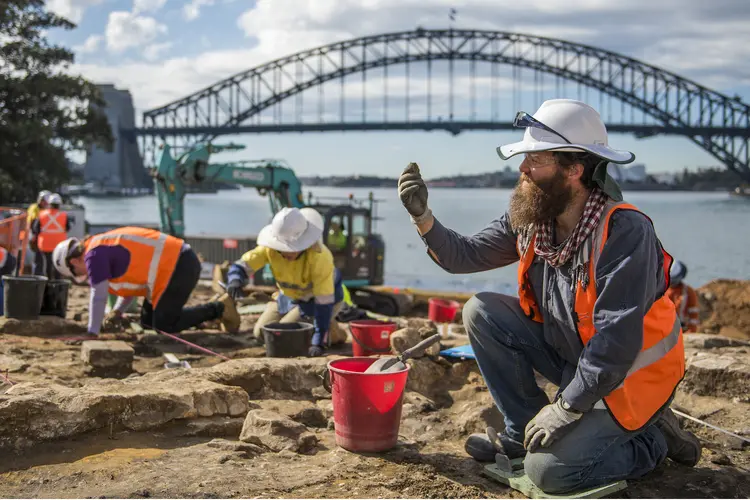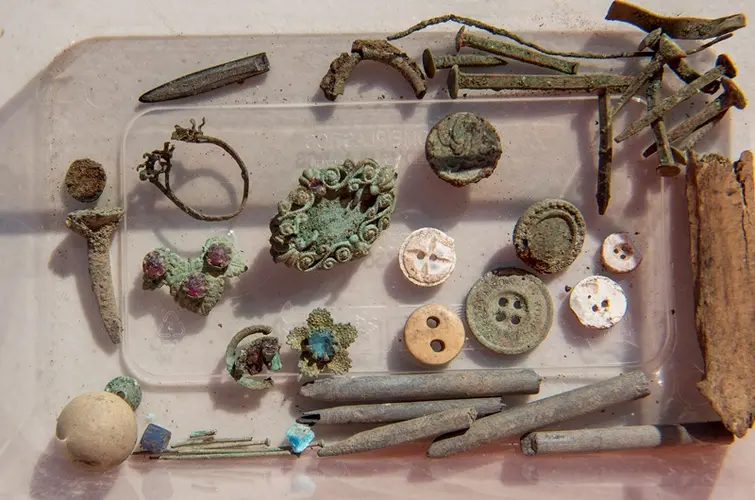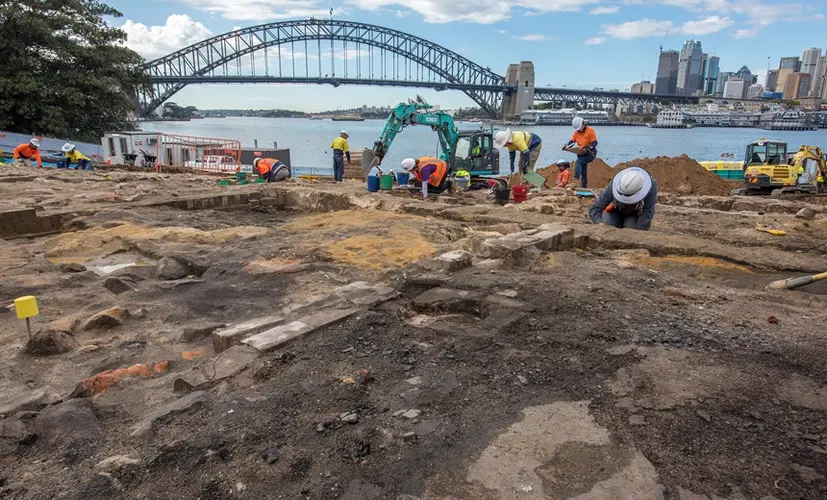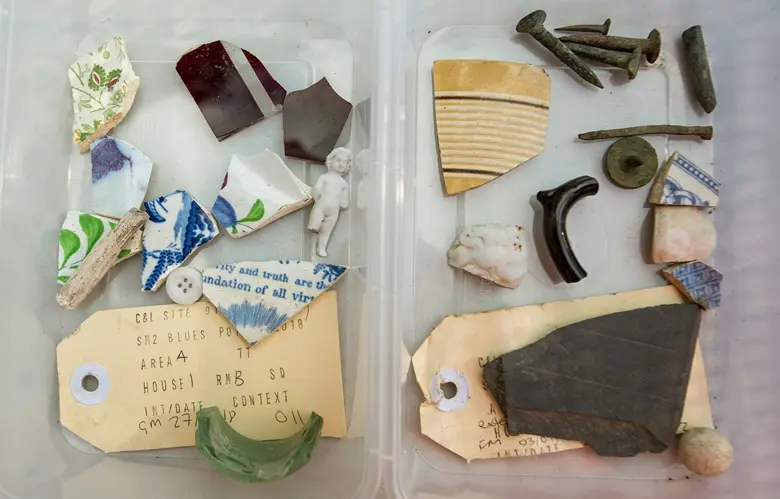Life in 1800s Sydney unveiled on Harbour foreshore
14.09.2018




A significant archaeological find on the shores of Sydney Harbour has uncovered part of Sydney’s 19th century past during delivery of the 21st century Sydney Metro project.
A significant archaeological find on the shores of Sydney Harbour has uncovered part of Sydney’s 19th century past during delivery of the 21st century Sydney Metro project.
Work on a tunnel boring machine (TBM) retrieval site at Blues Point has revealed a glimpse of life in Sydney in the mid-1800s.
Archaeological finds include the footings of a 19th century house on the shores of Sydney Harbour and artefacts from 1850s-1900s Sydney, including:
- toys like dolls and tea sets;
- cooking equipment;
- glass and crystal drinkware;
- buttons made from materials including mother of pearl and pressed porcelain;
- dress and boot hooks;
- jewellery including a copper alloy brooch; and
- ink pens.
The foundations were uncovered by archaeologists during heritage work at the Blues Point temporary retrieval site – where the mega TBMs that will dig under Sydney Harbour and the city’s north will be retrieved.
Many of the bowls, plates and dishes were made in the UK and decorated in hand-painted or transfer-printed patterns.
Ink pens were used by adults for writing letters, while children learned to write and do sums with slate pencils and boards.
Copper nails and other material from the rooms and yards show that some residents made and repaired boats moored at nearby jetties.
The 19th century house was built prior to 1857 and is associated with John Stevens, who acquired the site from the estate of Billy Blue, after who Blues Point is named.
In 1817 Governor Macquarie granted William “Billy” Blue, who came over as a convict and was of African descent, 80 acres of land on Sydney’s north shore. Blue moved there with his family and the headland became known as Blues Point.
Blue was the official ferryman for the North Shore, with rowing services from Dawes Point to Blues Point. His ferry service was the first major transport link to open up Sydney’s North Shore.
Any artefacts with a heritage value discovered during the tunnelling and excavation works will be recorded and preserved.
The artefacts are carefully packed and taken off site to be catalogued by artefact specialists.
Once the heritage investigations are complete, a report with the findings will be published and Sydney Metro will investigate how some of the artefacts can be appropriately displayed for the community.
Local community members were invited to attend the site for historic talks on 15 September 2018.